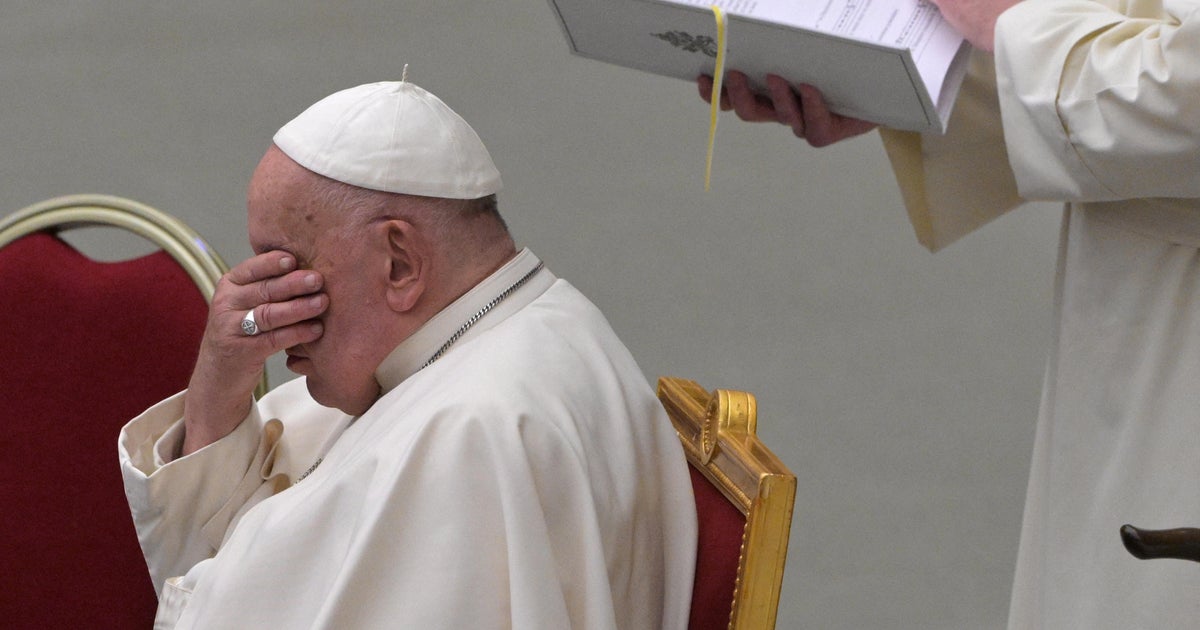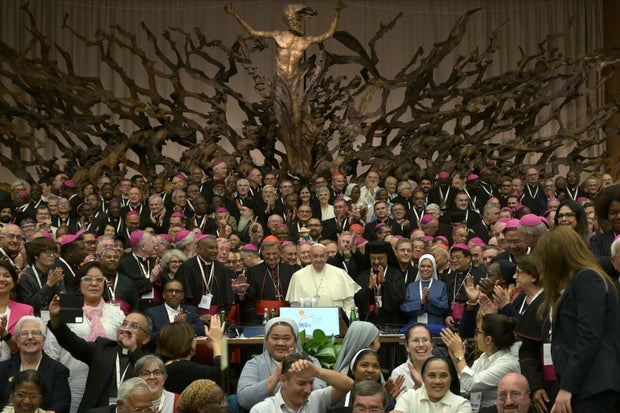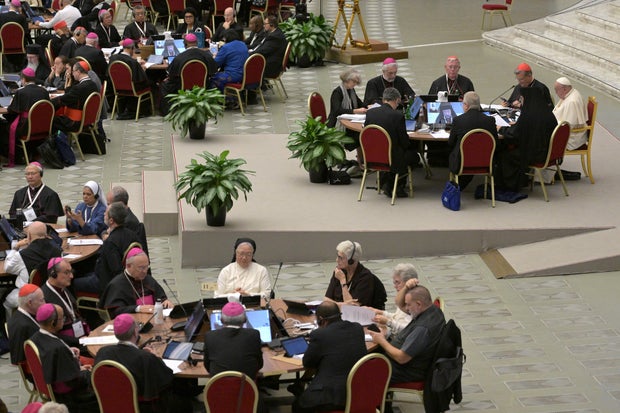CBS News
How much do home equity loans cost per month?

Getty Images
Your home’s equity is the portion of your home that you own free and clear. For example, if your home is worth $400,000 and your mortgage balance is $225,000, you have $175,000 in home equity. That’s money you can tap into to help you pay off high interest debt, make home repairs or cover a wide range of other expenses.
A home equity loan is one of the best ways to access your home equity. These loans, also called second mortgages, typically come with fixed interest rates and payments. Moreover, rates on these loans are usually very competitive because the lender uses your home as collateral.
But it’s important to understand the costs before you tap into your home’s equity. After all, you’ll need to pay your home equity loan back over time.
Access your home’s equity with a home equity loan today.
How much do home equity loans cost per month
The monthly cost of a home equity loan depends on the total amount of the loan as well as the interest rate your lender charges you. The average interest rates on home equity loans in today’s market are as follows:
- 10-year fixed home equity loan: 9.09%
- 15-year fixed home equity loan: 9.12%
Considering these averages, here’s what you can expect to pay on a home equity loan based on your loan’s value and duration (data courtesy of the First National Bank of Omaha home equity loan payment calculator):
- $25,000 10-year home equity loan: $318 per month
- $25,000 15-year home equity loan: $255 per month
- $50,000 10-year home equity loan: $636 per month
- $50,000 15-year home equity loan: $511 per month
- $100,000 10-year home equity loan: $1,272 per month
- $100,000 15-year home equity loan: $1,021 per month
It’s important to keep in mind that interest rates and home equity loan amounts can vary. So, your monthly payment may be higher or lower than the payments quoted above.
Find out how affordable your home equity loan can be now.
How to cut the cost of your home equity loan
As mentioned above, the cost of a home equity loan varies depending on the amount of the loan and the interest rate the lender charges. Of course, when costs can vary, there’s typically an opportunity to save. Here are a few ways you can cut the cost of your home equity loan:
Compare your options
Financial institutions are free to charge whatever interest rate they’d like when they issue a loan — within reason, of course. As a result, interest rates are one of the primary ways financial institutions compete with each other for your business.
“As with any loan, borrowers should research the best loan for their unique financial situation,” says Austin Niemiec, chief revenue officer for Rocket Mortgage.
So, if you want the lowest interest rate possible, it’s important to compare your options. Don’t just apply for the first home equity loan you find. Instead, look into at least three options to find the lowest interest rate possible in your unique situation.
Opt for a longer loan term
“Looking for a longer term can help” you save money on payments, says Niemiec. “Opting for a 20-year loan instead of a 10-year loan can help keep monthly payments low.” It’s worth noting, though, that while a longer term may reduce your monthly cost, it will likely increase the overall interest you’ll pay over the life of the loan.
Improve your credit score
Chances are that your credit score will play a significant role in the interest you pay on your home equity loan. Those with a strong credit profile typically pay better rates than those with a poor one.
“Another way to save money is by working to increase your credit score before applying for the loan. A higher credit score can help you get a lower interest rate which can save a lot of money in the long term. Even a quarter of a percentage point can save thousands of dollars,” Niemiec says.
So, it may be advantageous for you to take steps to improve your credit score before you apply for a home equity loan. Some things to consider doing to improve your credit include:
- Pay down your credit cards to improve your credit utilization and debt-to-income ratios.
- Settle any past-due debts.
- Make it a point to make all of your loan payments on time.
Consider purchasing discount points
When you purchase a home, you typically have the option to purchase discount points that reduce the overall interest on your mortgage. Some lenders also allow you to purchase discount points when you take out a home equity loan.
In most cases, discount points cost 1% of the total value of the loan and bring the interest on the loan down by 0.25%. Although the 1% up-front fee may seem relatively high, you could save a significant amount of money over the life of your loan by purchasing discount points if you plan on making minimum payments. However, discount points may not be worth it if you plan on paying your loan off early.
Don’t miss out on today’s best deals. Lock in your home equity rate now.
The bottom line
Home equity loans are relatively inexpensive, especially when compared to unsecured lending options like credit cards and personal loans. Moreover, there are a few things you can do to further reduce your cost of borrowing against your home. Tap into your home equity today to access the money you need.
CBS News
“CBS Weekend News” headlines for Saturday, Oct. 26, 2024

Watch CBS News
Be the first to know
Get browser notifications for breaking news, live events, and exclusive reporting.
CBS News
Navy issues apology for destroying Alaska Native village in 1882

Shells fell on the Alaska Native village as winter approached, and then sailors landed and burned what was left of homes, food caches and canoes. Conditions grew so dire in the following months that elders sacrificed their own lives to spare food for surviving children.
It was Oct. 26, 1882, in Angoon, a Tlingit village of about 420 people in the southeastern Alaska panhandle. Now, 142 years later, the perpetrator of the bombardment — the U.S. Navy —has apologized.
Rear Adm. Mark Sucato, the commander of the Navy’s northwest region, issued the apology during an at-times emotional ceremony Saturday, the anniversary of the atrocity.
“The Navy recognizes the pain and suffering inflicted upon the Tlingit people, and we acknowledge these wrongful actions resulted in the loss of life, the loss of resources, the loss of culture, and created and inflicted intergenerational trauma on these clans,” he said during the ceremony, which was livestreamed from Angoon. “The Navy takes the significance of this action very, very seriously and knows an apology is long overdue.”
While the rebuilt Angoon received $90,000 in a settlement with the Department of Interior in 1973, village leaders have for decades sought an apology as well, beginning each yearly remembrance by asking three times, “Is there anyone here from the Navy to apologize?”
“You can imagine the generations of people that have died since 1882 that have wondered what had happened, why it happened, and wanted an apology of some sort, because in our minds, we didn’t do anything wrong,” said Daniel Johnson Jr., a tribal head in Angoon.
The attack was one of a series of conflicts between the American military and Alaska Natives in the years after the U.S. bought the territory from Russia in 1867. The U.S. Navy issued an apology last month for destroying the nearby village of Kake in 1869, and the Army has indicated that it plans to apologize for shelling Wrangell, also in southeast Alaska, that year, though no date has been set.
Chief Mass Communication Spc. Gretchen Albrecht/U.S. Navy via AP
The Navy acknowledges the actions it undertook or ordered in Angoon and Kake caused deaths, a loss of resources and multigenerational trauma, Navy civilian spokesperson Julianne Leinenveber said in an email prior to the event.
“An apology is not only warranted, but long overdue,” she said.
Today, Angoon remains a quaint village of about 420 people, with colorful old homes and totem poles clustered on the west side of Admiralty Island, accessible by ferry or float plane, in the Tongass National Forest, the nation’s largest. The residents are vastly outnumbered by brown bears, and the village in recent years has strived to foster its ecotourism industry. Bald eagles and humpback whales abound, and the salmon and halibut fishing is excellent.
Accounts vary as to what prompted its destruction, but they generally begin with the accidental death of a Tlingit shaman, Tith Klane. Klane was killed when a harpoon gun exploded on a whaling ship owned by his employer, the North West Trading Co.
The Navy’s version says tribal members forced the vessel to shore, possibly took hostages and, in accordance with their customs, demanded 200 blankets in compensation.
The company declined to provide the blankets and ordered the Tlingits to return to work. Instead, in sorrow, they painted their faces with coal tar and tallow — something the company’s employees took as a precursor to an insurrection. The company’s superintendent then sought help from Naval Cmdr. E.C. Merriman, the top U.S. official in Alaska, saying a Tlingit uprising threatened the lives and property of White residents.
The Tlingit version contends the boat’s crew, which included Tlingit members, likely remained with the vessel out of respect, planning to attend the funeral, and that no hostages were taken. Johnson said the tribe never would have demanded compensation so soon after the death.
Merriman arrived on Oct. 25 and insisted the tribe provide 400 blankets by noon the next day as punishment for disobedience. When the Tlingits turned over just 81, Merriman attacked, destroying 12 clan houses, smaller homes, canoes and the village’s food stores.
Six children died in the attack, and “there’s untold numbers of elderly and infants who died that winter of both cold, exposure and hunger,” Johnson said.
Billy Jones, Tith Klane’s nephew, was 13 when Angoon was destroyed. Around 1950, he recorded two interviews, and his account was later included in a booklet prepared for the 100th anniversary of the bombing in 1982.
“They left us homeless on the beach,” Jones said.
Rosita Worl, the president of Sealaska Heritage Institute in Juneau, described how some elders that winter “walked into the forest” — meaning they died, sacrificing themselves so the younger people would have more food.
Even though the Navy’s written history conflicts with the Tlingit oral tradition, the Navy defers to the tribe’s account “out of respect for the long-lasting impacts these tragic incidents had on the affected clans,” said Leinenveber, the Navy spokesperson.
Tlingit leaders were so stunned when Navy officials told them, during a Zoom call in May, that the apology would finally be forthcoming that no one spoke for five minutes, Johnson said.
Eunice James, of Juneau, a descendant of Tith Klane, said she hopes the apology helps her family and the entire community heal. She expects his presence at the ceremony.
“Not only his spirit will be there, but the spirit of many of our ancestors, because we’ve lost so many,” she said.
CBS News
Pope Francis’ Catholic church reform process ends without giving more equity to women

Pope Francis’ yearslong process to reform the Catholic Church closed Saturday with recommendations that fell short of giving women more equity as hoped but reflected the pope’s aims for a church that at least listens more to its followers.
In a significant move, the pope said he would not issue a teaching document from the recommendations, which called for women to be allowed all opportunities that Church law already provides while leaving open the contentious question of allowing women to be ordained as deacons.
As a result, it remains unclear what if any authority or impact the synod’s final recommendations will have, given the purpose of the exercise was to provide the pope with specific proposals on reform.
“In this time of war, we must be witnesses to peace” and give an example of living with differences, the pope said in explaining his decision.
TIZIANA FABI/AFP via Getty Images
Francis said he would continue to listen to the bishops’ counsel, adding “this is not a classic way of endlessly delaying decisions.”
Deacons perform many of the same functions as priests, such as presiding over baptisms, weddings and funerals, but they cannot celebrate Mass. Advocates say allowing women to be deacons would help offset the shortage of priests. Opponents say it would signal the start of a slippery slope toward ordaining women to the all-male priesthood that Francis has repeatedly reaffirmed.
Earlier this week, the Vatican’s top doctrinal officer, Cardinal Victor Manuel Fernandez, told the extraordinary assembly of 368 bishops and laypeople that Francis had said the moment “is not ripe” for allowing the ordination of women as deacons. He did not respond directly to a request to define what would determine “ripeness” for a greater role for women.
The multi-year synod process had sparked great hopes for change, especially for women, who have long complained that they are treated as second-class citizens in the church. Women are barred from the church’s highest ministerial positions, yet do the lion’s share of the work running Catholic hospitals and schools and passing the faith onto future generations.
Speaking to the synod on Thursday, Fernandez explained that a special working group would continue beyond the closing of the meeting, but that its focus would be on discussing the role of women in the church — not in the diaconate, or the office of deacon. He added that while working with women in previous pastoral roles, “most did not ask for or want the diaconate, which would be cumbersome for their lay work.”
The meeting asked for “full implementation of all the opportunities already provided for in Canon Law with regard to the role of women, particularly in those places where they remain under-explored.” It leaves open “the question of women’s access to diaconal ministry.”
TIZIANA FABI/AFP via Getty Images
It was the most contested paragraph of the final document, with 258 votes for and 97 against. It was not clear if the “no” votes were because the language went too far or not far enough.
The outcome is a disappointment for Catholics who have been campaigning for recognition that women share a spiritual calling that is no different than a man’s. They also noted that despite the inclusion of women in the synodal process, the working group that is guiding discussions on women’s role is being run by the Roman curia, operating outside the synod.
“I think the final document will be received with much disappointment and frustration by many women around the world who are hoping for concrete changes,” said Kate McElwee, the executive director of the Women’s Ordination Conference.
While she acknowledged a “cultural shift,” she said “the pace of that shift is perhaps too slow for many women.”
The first phase of the synod process ended last year by concluding it was “urgent” to guarantee fuller participation by women in church governance positions, and calling for theological and pastoral research to continue about allowing women to be deacons.
If before the synod the idea of allowing women to be deacons was a fringe proposal pushed by Western progressives, the idea gained attention during the debate. It became something of a litmus test of how far the church was going to go, or not, to address demands of women for greater equality and representation in the church’s highest ranks.
Francis, had other ideas, insisting that ordaining women would just “clericalize” them and that there were plenty of other ways to empower women in the church, even leading Catholic communities, without resorting to ordination.







